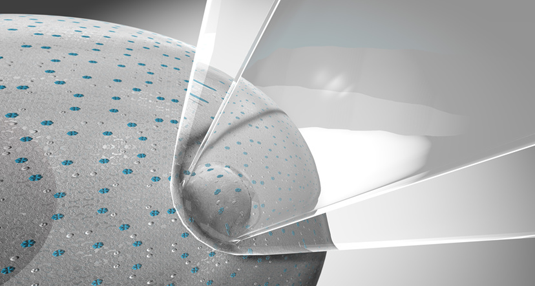Childhood dementia: Defining an enigmatic but vital function
 Patch-clamping provides a unique means of studying the electrophysiology of CLN3 in lysosomal vesicles. (Photo: sciencedisplay / fotolia.com)
Patch-clamping provides a unique means of studying the electrophysiology of CLN3 in lysosomal vesicles. (Photo: sciencedisplay / fotolia.com)
Neuronal Ceroid Lipofuscinosis (NCL) is a genetic disease for which there is no effective treatment. With an incidence of 1 in 30,000 live births, it is also the most common form of neurodegeneration and dementia in childhood. NCL forms a subclass of the lysosomal storage diseases (LSDs), all of which affect the function of intracellular organelles known as lysosomes. NCL results from mutational defects in various lysosomal proteins, including some whose functions remain unknown. One of these proteins, in which LMU pharmacologist Christian Grimm (Pharmacology for Natural Sciences) is particularly interested, is called CLN3. Grimm is a leading expert in the use of “patch clamping” to investigate the molecular biology of lysosomes, and was recently awarded the NCL Foundation’s Research Prize. The aim of the award is to stimulate the investigation of juvenile NCL by providing funding for innovative and promising research projects. Grimm’s winning project is designed to determine the biochemical function of CLN3.
The most frequent disease-causing mutation found in youngsters with NCL deletes a large part of the CLN3 protein, and disruption of CLN3 function is responsible for so-called juvenile NCL. CLN3 disease becomes manifest around the age of 4-7 and – like all forms of NCL – inevitably leads to premature death, due to widespread and progressive neurodegeneration. Lysosomes are the smallest class of the membrane vesicles found in eukaryotic cells, and their primary function is the degradation of specific proteins. The CLN3 protein is found only in the lysosomal membrane, but its precise function remains unknown. “There are indications that CLN3 acts either as an ion channel or as a calcium transporter,” Grimm explains. “My research group is the only one in Europe that is capable of studying the ion channels in the endolysosomal system with the aid of the patch-clamp technique, and we plan to use this method to characterize CLN3 in detail.”
Patch-clamping provides a unique means of studying the electrophysiology of CLN3 in lysosomal vesicles. A micropipette is brought into contact with a vesicle and small patch of membrane is detached by applying gentle suction. The patch then covers the end of the pipette, forming a tight seal. By filling the pipette with various salt solutions and applying a voltage via a microelectrode, the researcher can measure ion transport through individual protein channels in the patch, establish whether a channel is active or inactive, and identify the types of ions that can pass through it. Grimm and his colleagues will use this method to determine the function of CLN3 in the lysosomal membrane. But they also hope to find substances that activate or deactivate the protein. “Trying to do this with patch clamping alone is akin to searching for the proverbial needle in a haystack. So we will first employ a screening procedure to identify likely candidates,” Grimm explains. “If we succeed in finding such a substance, we can investigate its effect on CLN3 in detail with the patch clamp.”
A further important goal of the project is to develop new therapeutic agents for the treatment of NCL. “In many patients, CLN3 is completely degraded,” says Grimm. “One promising approach to therapy is to look for compounds that mimic the normal action of CLN3, and can functionally replace the defective protein. A few candidates have already been identified, and we hope that the insights we provide can contribute to further progress in this area.”